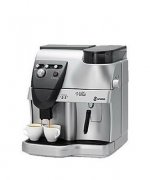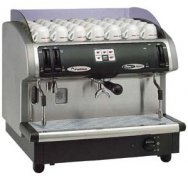Operation principle of coffee machine principle of single boiler heat exchange

Since Luigi Bezzera introduced the first commercial coffee machine with steam pressure in 1901, whether Pavoni Gaggia or other machines using steam or piston as pressure, there has been only one boiler: the boiler below provides hot water for brewing coffee, and the boiler above provides steam. However, in order to make steam, the whole boiler must be heated to boiling point, so that the hot water near the boiling point burns the coffee powder, loses the aromatic oils hidden in the coffee powder, and extracts the coffee with double bitterness.
Since the water for brewing coffee is heated in a large boiler, the water will not be fresh after being placed in the boiler for too long, and the temperature difference of the hot water will increase due to the use of steam, and the temperature difference of the hot water for brewing coffee will also increase due to the different amount of steam.
In order to improve the temperature difference, Ernesto Valente changed the heating method of the water used to brew coffee in the FAEMA E61, the world's first pump as a source of pressure, in 1960, so that the brewing water does not directly contact the heat source, but uses a method similar to water insulation heating.
The boiler of FAEMA E61 (hereinafter referred to as the outer boiler) has a pipe (hereinafter referred to as the inner pipe) in the middle, which uses pumps to introduce fresh cold water into the inner curved pipe. When the pump pushes fresh cold water through this pipe, the cold water is heated by the hot water in the outer boiler, but the outer pipe is wrapped so that the fresh water does not come into contact with the hot water in the outer boiler. The inner water pipe is curved so that the cold water has enough time to contact the outer boiler to reach the hot water temperature just suitable for brewing coffee.
(See below, this picture is a bit simple)
- ------Vapors
│ ┌- →
│ │
- <$^^^^^^^^^^^^
Cold Water--
→ -┬ ┬-┬-┐││┌-┬-┐│
-
pump │ └--┘ │
│ │
│ │
└------┘
boiler
Because of the circulation of hot water in the boiler, each cup of coffee is brewed at a very close temperature, whether it is one cup in an hour or a hundred cups at a time. In this way, not only can the temperature difference be reduced, but also the freshness of the water is taken into account, and the hot water in the boiler is only used to generate steam for making milk foam, and will not be used to brew coffee.
This is the principle of the single-boiler heat exchanger, until more than 30 years later, the internal structure and principle of most Italian coffee machines are still very close to FAEMA E61.
From the above explanation, we can infer that the larger the capacity of the external boiler, the lower the temperature difference of hot water brewing coffee, the more it can reduce the temperature difference caused by the use of steam.
Important Notice :
前街咖啡 FrontStreet Coffee has moved to new addredd:
FrontStreet Coffee Address: 315,Donghua East Road,GuangZhou
Tel:020 38364473
- Prev

SaecoVillaCappuccino automatic coffee maker Vera type
Brand name: Saeco Villa Silver automatic coffee machine Origin: Italian product model: Villa Silver product specification: 355*385*377mm boiler capacity: 1.7L voltage / power: 220v/1250w color: silver product features: fresh grinding, fresh cooking, immediately enjoy various forms of mellow coffee within 20 seconds; full automatic unlimited supply, one cup to pick up
- Next

Italian FAEMA semi-automatic coffee machine Due-A1
Machine name: Italian FAEMA-semi-automatic coffee machine Due-A1 machine specification: Due-A1 long 545mm x wide 520mm x high 465mm 4.1-4.8 (2.8) kw boiler 8L machine description: semi-automatic coffee machine, suitable for household, office and business use
Related
- What is the Philharmonic pressure? How to use Philharmonic pressure to make delicious coffee
- Why does a hand grinder have more fine powder than an electric grinder?
- In addition to the hot mom, what is the difference between the versions of EK43 | ditting and Mahdi ek43?
- What kind of equipment do you need to make coffee by hand? Introduction to novice starter cooking equipment tools
- Espresso needs to be ground how thick and thin scale entry Italian Coffee Machine Bean Grinder investigation and Grinding course
- How much does it cost to open a small private cafe? How much does it cost to learn coffee? How to operate it?
- The difference between the flavor characteristics of hand-brewed coffee and coffee maker is hand-brewed coffee really better than coffee maker? Can I use a coffee machine to make coffee beans by hand?
- The difference between 01 and 02 of hario v60 filter cup what is the difference between 01 and 02 filter cup opening and cooking flavor
- What's the difference between the smart cup and the French kettle? Which is better, the French kettle or the Smart Cup?
- What's the difference between a smart cup and a V60 filter cup? The difference between the taste of smart cup and hand-brewed coffee

